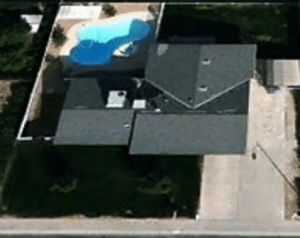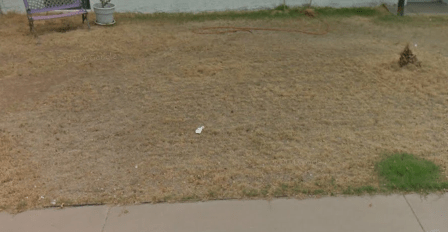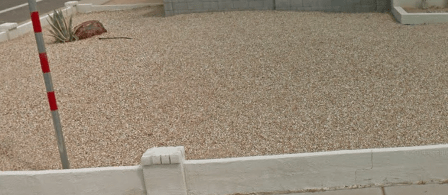 For four years most of California has been in drought status and yet they never instituted any reduction strategies until now. This has left many scrambling to not only see how much they are using now but also how to reduce. One of the quickest methods for most is to stop watering altogether or changing out their landscape. Why? Well that is because in many cases your landscape is one of the biggest water users for many households. (Curious how much – make sure you track it: Article & Spreadsheet)
For four years most of California has been in drought status and yet they never instituted any reduction strategies until now. This has left many scrambling to not only see how much they are using now but also how to reduce. One of the quickest methods for most is to stop watering altogether or changing out their landscape. Why? Well that is because in many cases your landscape is one of the biggest water users for many households. (Curious how much – make sure you track it: Article & Spreadsheet)
While that may sound like a great and easy choice, there are a few caveats, and if you are like most you might be wondering is there anything else I can do?
 Ahh the lets stop watering… Not only does this look ugly but you just increased your dusting as lawns not only help filter the air but capture dust (estimated 12 Million tons a year in the US), smoke & other pollutants. Not only that but you will have a ton of runoff and your soil will not be able to capture much of that water to return it to the aquifers many of us depend on for water.
Ahh the lets stop watering… Not only does this look ugly but you just increased your dusting as lawns not only help filter the air but capture dust (estimated 12 Million tons a year in the US), smoke & other pollutants. Not only that but you will have a ton of runoff and your soil will not be able to capture much of that water to return it to the aquifers many of us depend on for water.
 The other most popular option is to change to Xeriscaping or just go with rock. While xeriscaping will help reduce your water usage, there are some tradeoffs. While you will lesson some of the issues listed above you are looking at warmer temperatures & heat being reflected directly at your house. I have heard grass (and trees) referred to as natures air conditioner which is quite accurate.
The other most popular option is to change to Xeriscaping or just go with rock. While xeriscaping will help reduce your water usage, there are some tradeoffs. While you will lesson some of the issues listed above you are looking at warmer temperatures & heat being reflected directly at your house. I have heard grass (and trees) referred to as natures air conditioner which is quite accurate.
Reducing Usage:
- One of the first big items (especially if you are using a 100+ gallons a day per person) is make sure you don’t have any leaks: Fix A Leak
- Waiting for hot water – consider an on-demand hot water recirculating system
- Swap out aerators & shower heads with WaterSense products
- Keep up on your houses maintenance
- While it can be fun to simply hook your hose up and using that to spray down the driveway or deck, consider swapping that option with a big push broom
- If you have a pool like I did, consider using a cover to help prevent evaporation
Sprinkler / Drip Water Systems:
- Inspect your sprinkler system for broken heads, clogs, & leaks from bad connections (see the second picture, that nice little green spot – yep that is a sprinkler head leak even with the system being “off”)
- Look for areas where the grass is greener, ground is a little moister, or a depression in the ground – those are the three top signs you have a broken line or disconnect.
- Make sure all your heads are the proper type & aimed properly besides looking like an idiot for watering the sidewalk or road, you can start looking at rot and other issues for watering the side of your house
- Check out the new controllers available now which measure rainfall and adjust your watering schedule appropriately.
- Water for maximum absorption not just keeping the surface layer wet. You should only be watering once or twice a week and generally in the early morning hours to prevent evaporation. If you are getting runoff, you may have to alter the schedule or maybe even add in some small berms around the edges to help keep the water where it belongs.
- Speaking of absorption – find out how much water a plant or lawn needs & water accordingly. There are numerous ways to see how much & equally your system delivers including using a few cans and measuring how much is in each one & averaging – another method is just checking – step on the grass, if it springs right back it has enough water
Lawn / Landscaping Tips:
- Choose the right plants or grass for your area – for example in Phoenix choosing a rye type of grass is going to require more water than choosing Bermuda grass (especially with it’s deep roots) – We really can’t stress this enough, check with your local cooperative extension. (National Map)
- See if you can use gray water or rain water types of systems
- For gardens, flower beds, or shrubbery – don’t forget to mulch them to help hold water in, but also consider a drip water systems
- Consider removing some lawn & creating a catchment area, area for brushes, etc… Consider grouping plants based on water needs & zoning your system accordingly
- Make sure you aerate your lawn regularly (once every year or two) this helps keep it loose so it can absorb water. Leave the clippings on the lawn & instead of raking all your leaves – mulch them in place. This not only keeps your soil healthy but also helps eliminate the need for fertilizers
- Set your mower height properly – most grasses like to be left around 3 to 4″ in height. Not only is this better for the grass but also helps prevent the water from evaporating
Got any additional tips? Please leave them below
